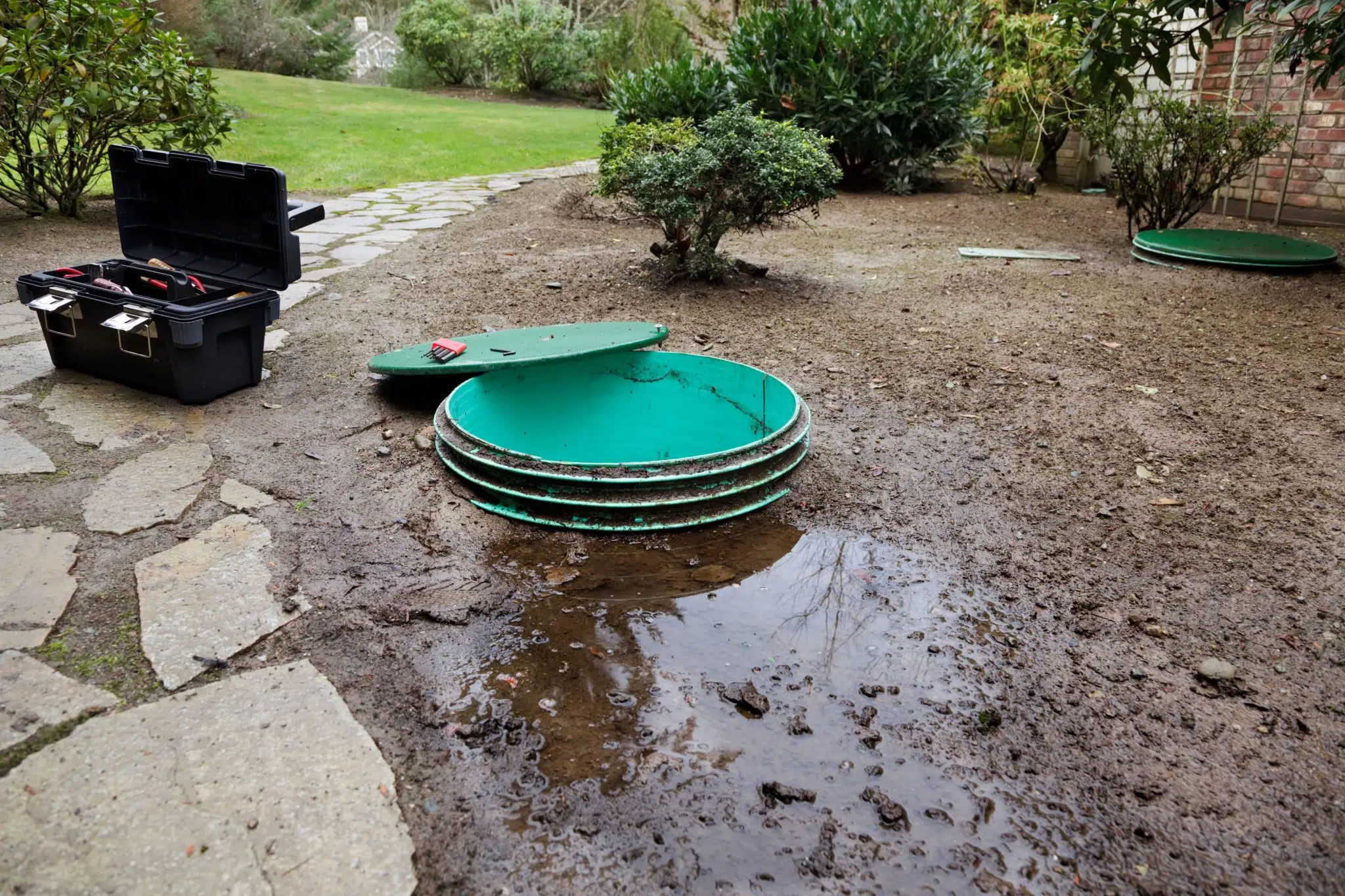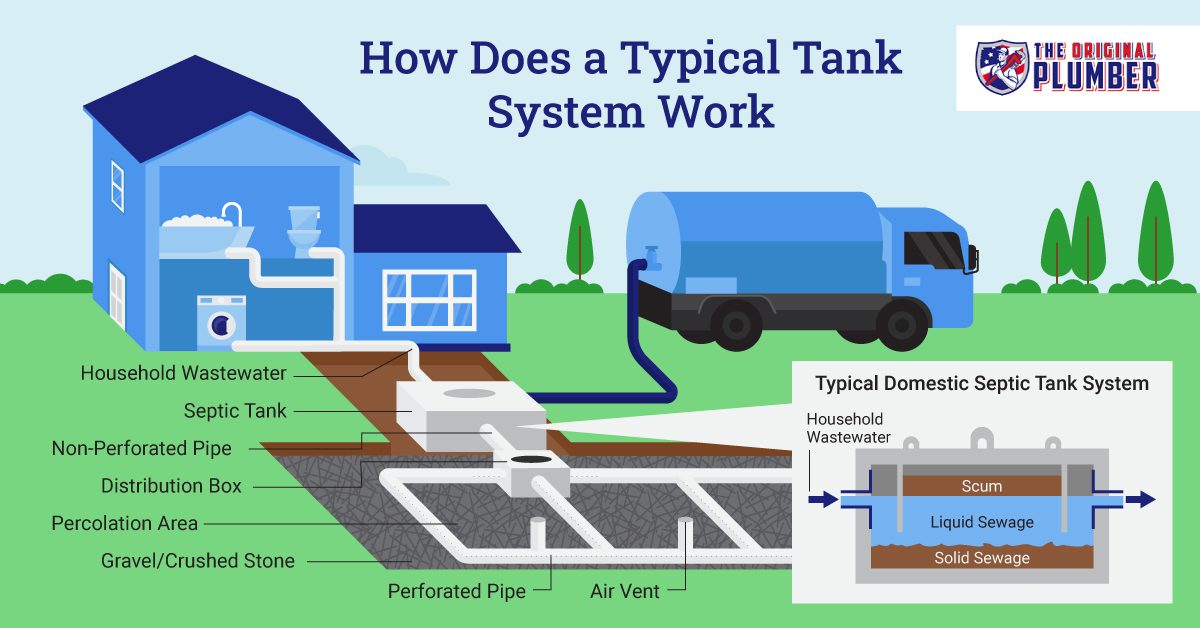Licensed Septic Tank Pumping Rome GA: Competent and Reliable Service
Wiki Article
The Art of Septic System Solutions: Professional Tips and Methods for Ideal Efficiency and Sustainability
With expert pointers on correct pumping and lasting practices, you'll be geared up to keep your septic container functioning perfectly for the long term. Get all set to grasp the art of septic tank solutions.Why Normal Maintenance Is Important
Normal maintenance is an important requirement for making certain the ideal efficiency and sustainability of your sewage-disposal tank system. By frequently keeping your septic system, you can prevent prospective issues before they become costly and troublesome problems (septic tank pumping rome ga). When you forget maintenance, your sewage-disposal tank can come to be overloaded with solid waste and sludge, causing clogs, backups, and also system failing
Regular upkeep entails a few crucial jobs that should be done on a regular basis. First, you ought to have your container pumped routinely, normally every 3 to five years, depending upon the dimension of your house and the tank's capacity. Pumping gets rid of the accumulated solids and prevents them from clogging the drain field. Furthermore, it is very important to evaluate the container and its components for any type of indicators of damages or wear. This consists of monitoring for leakages, splits, or tree origin breaches that can compromise the system's stability.
Recognizing the Duty of Germs
To make sure ideal performance and sustainability of your septic tank system, it is very important to recognize the critical duty that germs play in its working. Bacteria are the unhonored heroes of your septic container, as they are accountable for breaking down the strong waste and transforming it into liquid kind. This process is called food digestion, and it is crucial for the appropriate functioning of your septic container.Inside your sewage-disposal tank, there are two sorts of germs at work: cardio and anaerobic bacteria. Cardio bacteria call for oxygen to grow and make it through, and they are responsible for damaging down the organic matter in the existence of oxygen. On the other hand, anaerobic microorganisms do not need oxygen and are accountable for damaging down the raw material in the lack of oxygen.
Both sorts of microorganisms work with each other to make sure the efficient decay of waste in your sewage-disposal tank. They damage down the solid waste into sludge, which then settles at the end of the tank. The remaining fluid waste, called effluent, is then launched into the drain area for further treatment and filtration.
Without these microorganisms, your septic system would swiftly become overwhelmed with strong waste, leading to blockages, back-ups, and potential system failure. It is critical to maintain the best equilibrium of microorganisms in your septic tank by avoiding extreme use of anti-bacterial items and occasionally including microbial additives to promote their growth.
Avoiding Common Septic System Mistakes
Maintaining the proper equilibrium of germs in your septic storage tank is vital to prevent typical mistakes that can lead to system failure. These things can block the system and interrupt the natural breakdown of waste by the germs.One more mistake to stay clear of is utilizing severe chemicals or cleaners that can eliminate the valuable germs in your septic system. These bacteria play an essential function in breaking down strong waste, so it is necessary to utilize septic-safe cleansing items and avoid putting chemicals away.
Neglecting normal maintenance is another usual error that can lead to septic system issues. It is essential to have your container pumped consistently to eliminate accumulated sludge and stop it from triggering or overflowing damage to the drainpipe field. In addition, having your tank evaluated often can help recognize any possible issues prior to they come to be major troubles.
Lastly, too much water usage can overload your septic system and create it to fail. Once or taking excessively lengthy showers, be conscious of your water consumption and prevent running numerous appliances at. By preventing these usual mistakes and taking appropriate treatment of your septic system, you can ensure its ideal performance and avoid costly fixings in the future.
Tips for Proper Sewage-disposal Tank Pumping
- To ensure ideal efficiency and durability of your sewage-disposal tank, follow these three necessary pointers for appropriate pumping.
First of all, it is crucial to set up normal sewage-disposal tank pumping. Experts advise having your storage tank pumped every three to 5 years, depending upon the dimension of your home and the use of water (septic tank pumping rome ga). Routine pumping removes gathered sludge and stops it from obstructing the drain area, making sure the efficient performance of your septic tank
Second of all, it is essential to work with an expert septic tank pumping solution. An expert will have the needed equipment and proficiency to pump your container efficiently and safely. They will certainly also check the tank for any type of signs of damages or leaks, permitting early detection and avoidance of potential problems.
Last but not least, it is vital to exercise proper maintenance between pumpings. Stay clear of flushing non-biodegradable products, such as wipes or womanly hygiene products, down the toilet. These products can obstruct the pipelines and result in pricey fixings. In addition, bear in mind too much water usage and think about installing low-flow fixtures to reduce stress on your septic tank.
Lasting Practices for Long-Term Performance
For long-term performance, it is very important to take on sustainable methods that will certainly optimize the performance of your septic system. By applying these practices, you can ensure the durability and effectiveness of your sewage-disposal tank.First of all, regular maintenance is important. Schedule regular evaluations and pumpings to avoid any kind of buildup of sludge and residue. This will assist maintain the appropriate equilibrium of germs within the tank and protect against clogging or overflow issues.
Second of all, bear in mind what you purge down the drains pipes. Stay clear of dealing with non-biodegradable things, such as diapers, wipes, or feminine health products, as they can cause obstructions and damage to the system. Furthermore, limit the usage of extreme chemicals, such as bleach or anti-bacterial soaps, as they can disrupt the microbial equilibrium within the tank.

Moreover, shield the drainpipe field location. Prevent car park cars or positioning hefty things over the drain index area, as this can small the soil and limit its ability to take in wastewater correctly. Planting lawn or shallow-rooted plants can aid soak up excess dampness and give all-natural filtering.
Conclusion

You should have your tank pumped routinely, typically every three to 5 years, depending on the dimension of your home and the tank's ability.To guarantee optimum efficiency and sustainability of your septic tank system, it is crucial to recognize the essential role that germs play in its functioning.Inside your septic tank, there are 2 go now types of bacteria at click over here work: cardio and anaerobic bacteria.Both kinds of germs work with each other to make certain the efficient disintegration of waste in your septic tank.Maintaining the correct equilibrium of microorganisms in your septic tank is critical to prevent usual blunders that can lead to system failing.
Report this wiki page